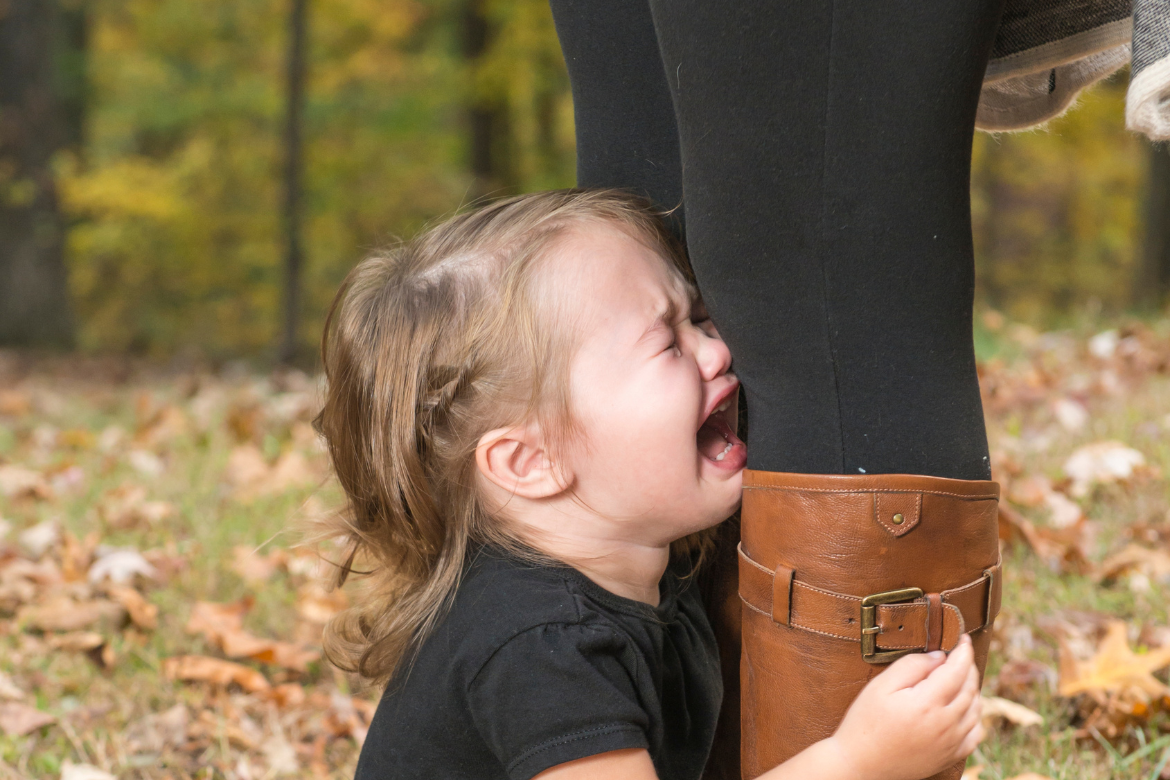

Searching for an “Attachment Therapist near me?” We can help! Through compassionate Attachment Therapy, we support you in exploring Attachment Theory, which shows how early experiences shape your relationships. Understanding your Attachment Style is key to healing past wounds and building secure, healthy bonds with yourself and others.
What is Attachment Theory?
Attachment theory, first developed by psychologist John Bowlby in the mid-20th century, explores how our earliest relationships shape our ability to connect with others throughout life. Inspired by studies on the bonds between infants and their caregivers, Bowlby’s research revealed that these early attachments influence not only our social and emotional development but also our mental and physical health.
Mary Ainsworth, a developmental psychologist, expanded on Bowlby’s work and conducted a groundbreaking study in the 1970s called the “Strange Situation” experiment. This research became a cornerstone of attachment theory, offering profound insights into how attachment styles are formed.
The Strange Situation Experiment
The Strange Situation was a controlled observation designed to assess the quality of attachment between infants and their primary caregivers. During the experiment, an infant and their caregiver were placed in a room with toys. The sequence of events included the caregiver leaving the room briefly, leaving the child with a stranger, and then returning. Researchers carefully observed the infant’s reactions to the caregiver’s departure and return.
The findings identified distinct attachment styles based on how infants responded:
- Secure Attachment: Infants with secure attachment were visibly distressed when their caregiver left but were easily comforted upon their return. This indicated a strong, trusting bond.
- Anxious Attachment: Infants with anxious attachment showed intense distress when the caregiver left and difficulty calming down even when the caregiver returned.
- Avoidant Attachment: Infants with avoidant attachment seemed indifferent to the caregiver’s departure and return, masking their internal distress.
- Disorganized Attachment: Infants with disorganized attachment exhibited a mix of behaviors, including fear or confusion, often reflecting an inconsistent or traumatic caregiving experience.
These early attachment styles set the stage for how we approach relationships later in life.

- Secure Attachment: Adults with secure attachment feel confident in relationships. They trust others, communicate openly, and navigate conflicts constructively. This style is rooted in consistent and supportive caregiving during childhood.
- Anxious Attachment: Adults with an anxious attachment style may crave closeness while fearing abandonment. They often seek reassurance and may struggle with insecurity in their relationships.
- Avoidant Attachment: Individuals with avoidant attachment value independence to the point of avoiding intimacy. They may suppress their emotions or struggle to trust others, often due to emotionally distant caregivers.
- Disorganized Attachment: This style combines both anxious and avoidant tendencies. Adults with disorganized attachment may desire closeness but fear it, leading to conflicted and unpredictable behavior in relationships.
Why Understanding Your Attachment Style Matters
Your attachment style influences how you relate to others, handle conflicts, and build emotional connections. If you’re curious about your own attachment style, take our free quiz to gain valuable insights into how it may be shaping your relationships and behaviors.
What is My Attachment Style Quiz
What Happens Without A Secure Attachment Style?
Secure attachment serves as the foundation for emotional regulation, healthy relationships, and resilience in the face of life’s challenges. When secure attachment is missing, children often adapt by developing maladaptive coping strategies to navigate an environment that feels unsafe or unpredictable.
Examples of maladaptive coping strategies a child might adopt include:
- Emotional Suppression: Avoiding or hiding emotions to prevent upsetting caregivers or drawing unwanted attention.
- Hypervigilance: Constantly scanning the environment for signs of danger or conflict.
- People-Pleasing Behaviors: Prioritizing others’ needs and approval to maintain a sense of safety or avoid rejection.
- Withdrawal: Isolating from others to reduce vulnerability or escape overwhelming situations.
- Aggression: Reacting with anger or hostility to regain a sense of control or protect oneself.
- Perfectionism: Striving to meet impossibly high standards to feel worthy or reduce criticism.
While these strategies may have helped the child cope with challenging environments, they often persist into adulthood, where they can lead to difficulties in relationships, mental health, and overall well-being.

As Adults, These Maladaptive Patterns Can Lead to the Following Difficulties:
- Difficulty Managing Conflict: When attachment wounds go unresolved, individuals often struggle with constructive conflict resolution. They may resort to defensive strategies like shutting down, escalating arguments, or avoiding discussions entirely. This makes it hard to address issues in relationships, leading to cycles of misunderstanding and resentment.
- Emotional Dysregulation and Impulsivity: An absence of secure attachment can leave individuals with underdeveloped emotional regulation skills. They may experience intense emotions that feel overwhelming and struggle to manage these feelings in healthy ways. This can lead to impulsive behaviors, such as lashing out in anger, making rash decisions, or turning to substances or activities for temporary relief.
- Borderline Personality Disorder (BPD): Unresolved attachment wounds, particularly those from inconsistent caregiving, can contribute to the development of BPD. Individuals may struggle with extreme emotional swings, fear of abandonment, unstable self-image, and difficulty maintaining stable relationships. These symptoms often arise from early attachment disruptions that were never properly addressed.
- Challenges Giving or Receiving Love: People without secure attachment may find it difficult to trust others or feel unworthy of love themselves. They might struggle to open up emotionally or, conversely, become overly clingy and dependent in their relationships. These challenges can make forming and maintaining healthy emotional bonds difficult.
- Anxiety, Depression, or Feelings of Isolation: The absence of a secure foundation can leave individuals feeling disconnected from others and from themselves. They may experience pervasive loneliness, anxiety about abandonment, or deep sadness stemming from unmet emotional needs. These feelings often contribute to cycles of depression and self-doubt.
- Addictive Behaviors or Escapism: Many people without secure attachment turn to addictive behaviors, whether through substances, work, technology, or even relationships, as a way to escape their inner turmoil. These coping mechanisms can provide temporary relief but often worsen feelings of isolation and emotional instability in the long term.
- Blame-Shifting and Lack of Accountability: When individuals haven’t experienced secure attachment, they may find it difficult to take responsibility for their actions. They might engage in blame-shifting or denial during conflicts to protect themselves from feelings of shame or inadequacy. These behaviors can strain relationships and prevent personal growth.
- Complex PTSD (cPTSD): Chronic emotional neglect, emotional invalidation, inconsistent caregiving, or traumatic attachment experiences can contribute to cPTSD, where individuals experience lasting emotional scars. Symptoms of cPTSD often include emotional numbness, flashbacks, hypervigilance, and difficulty with relationships, which can be a direct result of attachment wounds left unaddressed.
- Learned Helplessness: When a person repeatedly experiences situations where they feel powerless or unable to affect change they may develop learned helplessness. This condition involves feeling as though their actions have little impact on their circumstances, which can lead to apathy, depression, and a lack of motivation to seek positive change.
These patterns often feel deeply ingrained because they were initially formed as survival mechanisms during a vulnerable time in life. Over time, these behaviors may become second nature, creating a sense of familiarity—even if they are ultimately destructive. This can make change feel intimidating or even impossible, as the thought of leaving behind these patterns may feel like abandoning a sense of identity or safety.

The Good News: Attachment Wounds Can Be Repaired With Attachment Therapy
While the challenges of attachment wounds can feel overwhelming, it’s important to understand that the human brain has an extraordinary capacity for growth and healing through a phenomenon known as neuroplasticity. Neuroplasticity refers to the brain’s ability to reorganize itself by forming new neural connections throughout life. This means that, even if maladaptive patterns have been ingrained for many years, the brain remains adaptable and capable of change.
When a person experiences a lack of secure attachment in childhood, their brain adapts by forming neural pathways that support survival in an unsafe environment. These pathways often reinforce unhealthy coping mechanisms and emotional responses. However, neuroplasticity gives hope because the brain can “rewire” itself when given the right conditions, tools, and experiences.
How Neuroplasticity Supports Healing
- Creating New Neural Pathways: In Attachment Therapy, you can create new neural connections by engaging in experiences that promote emotional regulation, trust-building, and healthy attachment. As you practice new, healthier ways of thinking and relating, your brain forms stronger circuits that support these adaptive behaviors, helping you build lasting change.
- Strengthening Your Prefrontal Cortex: Your prefrontal cortex is responsible for decision-making, impulse control, and emotional regulation. However, when you’re stuck in a constant state of fight-or-flight, this part of your brain can’t function at its best. To activate and strengthen your prefrontal cortex, it’s essential to first regulate your nervous system. Our FREE 21-Day Nervous System Reset Challenge, which incorporates somatic therapy techniques, helps you release tension, move out of survival mode, and reconnect with a calm, centered state.
- Rewiring Your Emotional Responses: When you learn to identify and regulate your emotions, you retrain your brain to respond differently to triggers. This rewiring process reduces automatic, maladaptive emotional reactions from past attachment wounds, helping you experience more emotional stability and control.
- Healing Through Experience: Repeated exposure to secure, supportive relationships—whether in therapy or daily life—fosters the growth of healthier attachment-related pathways. These corrective emotional experiences, especially within the therapeutic space, reshape your brain’s response to intimacy, trust, and connection.
- Building Resilience and Adaptability: Neuroplasticity is not just about rewiring negative patterns—it’s also about enhancing your resilience. As you work through attachment wounds, your brain becomes more adaptable and better able to handle emotional challenges, fostering a greater sense of self-efficacy and emotional well-being.
In essence, attachment wounds are not permanent, and the brain’s ability to heal provides a powerful foundation for lasting change. Through therapeutic interventions and the right supportive environment, you can experience profound transformation, cultivating secure, fulfilling relationships and healthier emotional responses. Neuroplasticity makes it possible to heal from the past and build a future grounded in emotional resilience and connectedness.
How Attachment Therapy Can Help Heal Attachment Wounds
Repairing attachment wounds is a process that requires patience, trust-building, and a supportive therapeutic environment. An Attachment Therapist would take a compassionate, trauma-informed approach to help a client heal from the effects of insecure attachment. Here are key steps a therapist might take to facilitate attachment repair:
1. Establishing a Secure Therapeutic Relationship
- Trust and Safety: Your therapist’s primary goal is to create a safe, nonjudgmental space where you feel heard and understood. This involves being reliable, consistent, and emotionally attuned to your needs, which mimics the secure attachment you may not have experienced in childhood.
- Modeling Secure Attachment: Through your interactions with your Attachment Therapist, you can learn what healthy, secure relationships feel like. Your therapist will model empathy, validation, and emotional availability, which will help you understand how to connect with others in a healthier way.
2. Exploration of Past Attachment Experiences
- Gentle Inquiry: Your Attachment Therapist may ask you about early relationships with caregivers, including both positive and negative aspects. This is done with great care, as delving into painful memories can trigger intense emotions.
- Identifying Attachment Patterns: Your Attachment Therapist will help you recognize your own attachment style—whether secure, anxious, avoidant, or disorganized—and how these patterns have influenced your relationships.
- Reframing Early Experiences: Your Attachment Therapist may guide you to reframe early attachment experiences by helping you understand how those patterns were adaptive survival strategies, even though they no longer serve you in the present day.
3. Developing Emotional Regulation Skills
- Self-awareness: Attachment Therapy will help you become more aware of your emotional responses. You can learn skills like mindfulness, grounding exercises, and breathwork to manage intense emotions. Additionally, your therapist may incorporate therapeutic modalities like Dialectical Behavioral Therapy (DBT) to help you build emotional regulation skills, tolerance for distress, and healthier ways to cope with overwhelming feelings. These tools will empower you to respond to emotional triggers in a more balanced, controlled way.
- Emotional Expression: Your Attachment Therapist may encourage you to express your emotions in a safe, controlled manner, particularly if you have learned to suppress your feelings. This could involve talking about feelings or using creative outlets like art or journaling to access deeper emotions.
4. Healing Through Re-parenting and Self-Compassion
- Re-parenting Exercises: Your Attachment Therapist may guide you through exercises that involve “re-parenting” your inner child such as providing the nurturing care you lacked in childhood. This could include visualizing a compassionate, loving version of yourself offering comfort or addressing unmet needs.
- Building Self-Compassion: Attachment Therapy will also help you develop kindness toward yourself, especially if you’ve struggled with self-criticism or shame. By cultivating self-compassion, you can start to heal old wounds.
5. Addressing the Impact on Current Relationships
- Identifying Current Patterns: You’ll explore how attachment wounds show up in your current relationships. This may include avoiding intimacy, becoming overly dependent, or fearing abandonment.
- Behavioral Interventions: Attachment Therapy may incorporate additional therapeutic modalities like cognitive-behavioral therapy (CBT) or emotionally-focused therapy (EFT) to challenge and change unhelpful relationship patterns. This might involve learning new ways of communicating, setting boundaries, or practicing vulnerability in relationships.
6. Corrective Emotional Experiences
- Experiential Work: In some therapeutic modalities, your therapist might engage in role-playing, empty-chair work (a technique often used in Gestalt Therapy), or other experiential exercises to give you a chance to process unmet needs or missed emotional experiences. Additionally, Internal Family Systems (IFS) therapy may be used to help you identify and understand different parts of yourself that may have developed in response to past wounds. IFS can assist you in recognizing and healing these parts, such as the inner critic or vulnerable child, which can be key in addressing unmet emotional needs. By working with these parts, you can foster self-compassion and reframe past experiences, helping you heal from within and create healthier emotional responses.
- Providing New Experiences of Support: Through your therapeutic relationship, you’ll also gain a new experience of emotional security and support. This can help you reshape your ability to trust and connect with others in healthier ways.
7. Gradual Reintegration of Trust
- Slow and Steady Progress: Healing attachment wounds takes time, and you’ll build trust in yourself and others at your own pace. Your therapist will support you as you work to feel safe enough to open up and trust again.
- Challenging Self-Doubt: Attachment Therapy will help you challenge deeply ingrained negative beliefs and replace them with healthier, more empowering thoughts. A good first step is to start with neutral affirmations which acknowledge existing beliefs without attempting to force a drastic shift. Instead, they seek to introduce a middle ground, a more balanced and realistic perspective. You go from limiting belief, “I’m not worthy of love” to the more neutral, “I am willing to practice loving myself” and from there you may gradually move toward, “I love myself.”
8. Fostering Resilience and Empowerment
- Building Resilience: You’ll also focus on building resilience by learning how to better cope with stressors and challenges. Attachment Therapy will help you develop a stronger sense of self-worth and emotional stability.
- Empowerment: Attachment Therapy can guide you in taking control of your healing journey and integrating the lessons you’ve learned into your daily life. This empowers you to nurture healthy relationships and become your most authentic self.
Repairing attachment wounds is a deeply personal journey, but with the Attachment Therapy you can learn to form secure attachments, trust others, and foster healthy, resilient relationships. The process often involves unlearning long-held patterns and adopting new ways of relating to oneself and others.

Interested in Starting Attachment Therapy?
If you’re ready to begin the journey of healing attachment wounds and developing healthier emotional patterns, Attachment Therapy can provide the space and support you need.
Contact us today at 412-856-WELL or fill out the form below to schedule a consultation. Together, we can explore the healing possibilities and help you build more secure, connected relationships with yourself and others.
Attachment Theory Blogs

Attachment Styles in Adult Romantic Relationships
by Counseling and Wellness Center of PittsburghMay 8, 2023 attachment styles, attachment theory, couples counseling, couples therapy, dating, relationship, relationship conflict, relationship counseling, relationship resolutions0 comments
Attachment theory, which was first introduced by British psychoanalyst John Bowlby in the 1950s and 60s, posits that the way a child forms attachments to their primary caregiver can have a significant impact on how we approach romantic relationships as adults. Research has shown that early attachment styles can manifest in a variety of ways within our adult romantic relationships,...
Learn More

